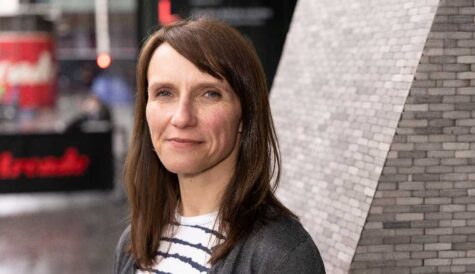Prison sells
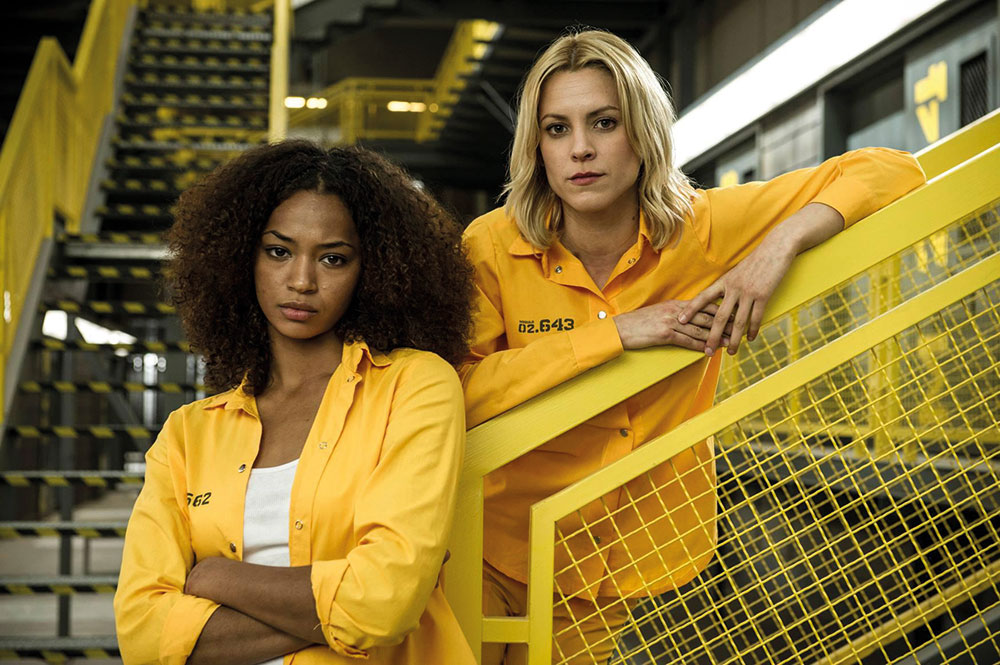 Prisons have long been a source of fascination for TV producers – as illustrated by series such as British sitcom Porridge, Australian soap Prisoner Cell Block H and HBO limited series Oz. Right now, though, there are more outstanding prison-themed shows than ever, across both scripted and factual television, reports Andy Fry.
Prisons have long been a source of fascination for TV producers – as illustrated by series such as British sitcom Porridge, Australian soap Prisoner Cell Block H and HBO limited series Oz. Right now, though, there are more outstanding prison-themed shows than ever, across both scripted and factual television, reports Andy Fry.
Prison might not be a fun destination for criminals, but it is for television producers, who return to the clink time and time again for inspiration. In terms of TV drama, there are titles In terms of TV drama, recent prison-themed efforts include Netflix’s Orange is the New Black and Foxtel Australia’s Wentworth, while in the factual arena there are shows including A&E’s 60 Days In and Channel 4’s The Secret Life Of Prisons. To these can be added the upcoming reboot of Prison Break, Icelandic drama Fangar and Sky’s well-received eight-part series Prison: First & Last 24 Hours.
Explaining the recent boom in prison-themed factual production, Woodcut Media CEO Kate Beal sees it as “part of the true crime explosion that has been evident in recent years”, though the success of Orange is the New Black has “also had an impact”. As with other true crime subjects, “audiences love to learn about and analyse crime from the safety of their homes,” says Beal, whose company made Holloway: Women Behind Bars for UK pay TV channel Crime & Investigation. “I also think there’s a growing appreciation that prisons aren’t just filled with the worst elements of humanity. There’s more of a realisation that many of us are just one wrong turn, one simple mistake, from ending up in prison.”
This is a theme that producers use as a way attract audiences, agrees STV head of documentaries Michael McAvoy, who oversaw the production of Prison: First & Last 24 Hours (below), recently commissioned for a second season. “Our approach was very much to let the prisoners tell their own stories,” he says. “There are clearly some people in prison who have done very bad things, but we were really interested in situations where the audience might start out with a negative impression of an inmate, but gradually shift position as they hear their story.”
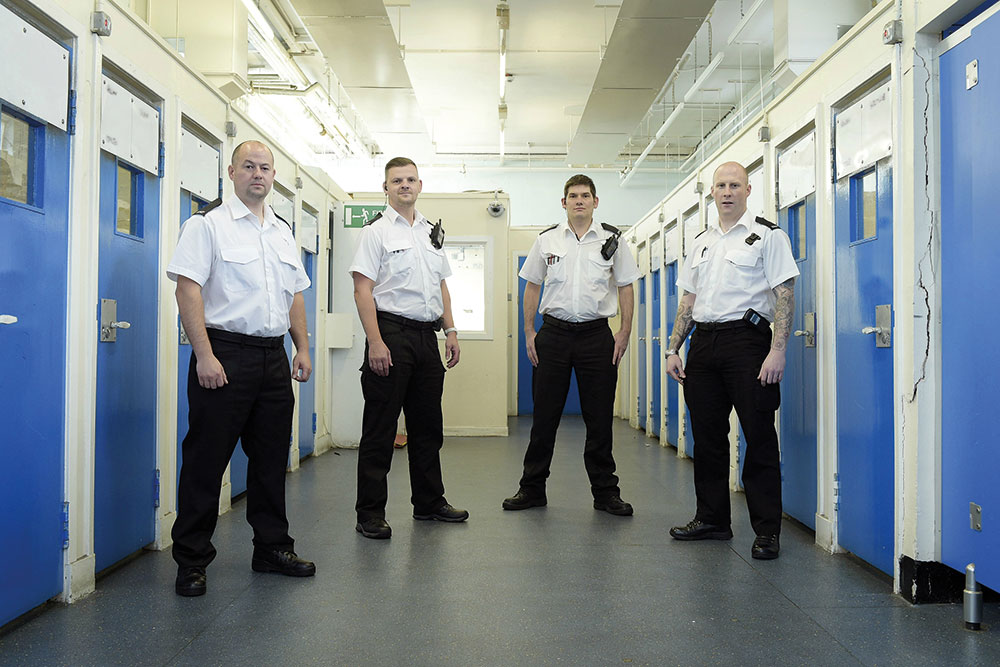 It’s very challenging to put together a factual prison series for a number of reasons. “One is that life in prison is actually quite boring, which is why we focused on the first and last days, times when inmates are dealing with heightened emotions,” McAvoy says. “It also takes a while to get a feel for the rhythm of life behind bars. We put our crews behind bars for three weeks without cameras so they could adapt to that rhythm and build up the necessary trust with prison officers and inmates.”
It’s very challenging to put together a factual prison series for a number of reasons. “One is that life in prison is actually quite boring, which is why we focused on the first and last days, times when inmates are dealing with heightened emotions,” McAvoy says. “It also takes a while to get a feel for the rhythm of life behind bars. We put our crews behind bars for three weeks without cameras so they could adapt to that rhythm and build up the necessary trust with prison officers and inmates.”
Over and above editorial considerations, there are key practical considerations. “We had to think about security, both for our crews and people who might appear in the final edit,” McAvoy says. “There were also legal issues. We were checking in with the courts right up to the day of transmission so that we didn’t run into any contempt of court issues. Having enough strong stories that we were allowed to tell on air was one reasons that we filmed across four Scottish prisons.”
There are also access problems to consider. “We were in the fortunate position that the Scottish Prison Service was behind the project, because they wanted to show the progress that had made in prison officer-inmate relationships,” says McAvoy.
Access to prisons isn’t easy to secure because it is such a politically-charged subject. However, projects have managed to get inside jails. ITV in the UK, for example, was granted access to Jersey’s La Moye Prison (Life at La Moye), while RTÉ in Ireland aired Life on the Inside, a look at life in two Irish prisons. Produced by Midas Productions, the latter show followed the lives of six prisoners over the course of a year.
Access is especially powerful if you can link it to personal jeopardy, which is what Paris-based indie Pernel Media is seeking to do with 20 Years on Death Row, a true crime series about death row inmate Keith Doolin, who many believe is innocent based on new evidence.
“The case of Keith Doolin is a story like no other,” says Pernel Media president Samuel Kissous, who has secured direct access to the inmate. “It points to a major miscarriage of justice where the stakes for him could not be higher. The new evidence that has come to light could change everything. Keith’s appeal process and investigation of the case will make a gripping documentary series.”
 While access is broadly speaking an asset to prison documentaries, producers need to be careful that it is being granted for the right reasons, says Woodcut’s Beal (right). “We have turned down offers of access when we have felt that the authorities didn’t want to share insights into a particular angle,” she says.
While access is broadly speaking an asset to prison documentaries, producers need to be careful that it is being granted for the right reasons, says Woodcut’s Beal (right). “We have turned down offers of access when we have felt that the authorities didn’t want to share insights into a particular angle,” she says.
“Producers need to be thinking about more innovative ways to get inside prisons. One alternative is to build a production around prisoner-shot mobile video footage.”
In the UK, for example, Channel 4 has just aired a documentary called The Secret Life of Prisons, which used footage illegally taken by inmates inside jails to give a stark glimpse of the problems facing the prison service. The resulting film paints a picture of a system out of control, where prison officers have lost control of inmates, gangs prey on mentally-ill prisoners, and drug abuse is resulting in dozens of inmate deaths. Smuggled mobile phones are also a problem: prison authorities say they’ve been used to commission murders, organise escapes and smuggle machine guns into the country.
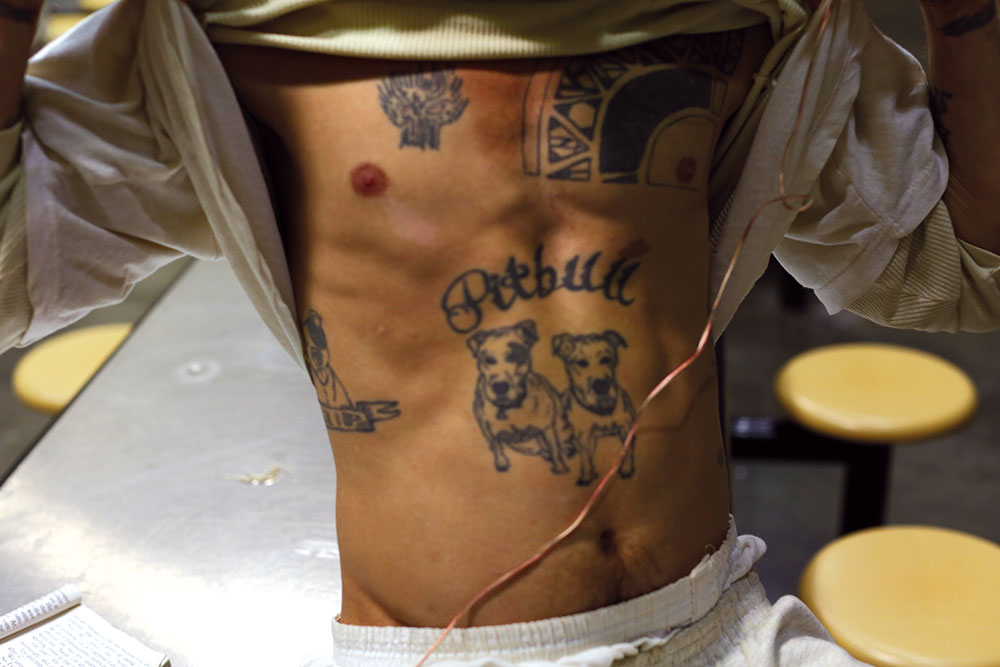 The most high-profile factual prison series in the market right now is 60 Days In (above), an A&E project that has rated well in the US and been aired in more than 100 territories. In this case, seven volunteers agreed to spend 60 days undercover in an Indiana jail as part of an attempt to spot illegal activities that might be missed by prison officers and surveillance systems. The scheme was overseen by the local sheriff, but inmates, guards and most prison officials were kept in the dark. “I really believe there has been nothing like it on TV,” says Elaine Frontain Bryant, executive VP and head of programming for A&E.
The most high-profile factual prison series in the market right now is 60 Days In (above), an A&E project that has rated well in the US and been aired in more than 100 territories. In this case, seven volunteers agreed to spend 60 days undercover in an Indiana jail as part of an attempt to spot illegal activities that might be missed by prison officers and surveillance systems. The scheme was overseen by the local sheriff, but inmates, guards and most prison officials were kept in the dark. “I really believe there has been nothing like it on TV,” says Elaine Frontain Bryant, executive VP and head of programming for A&E.
 Part of the appeal of the show was that viewers gained a deeper insight into the lives of prisoners, but “what really set it apart was the idea of sending innocent people into jail to get information for the good of the system”, says Frontain Bryant (right). “Audiences were really interested in the reasons why these people were willing to do this, and also in the possibility that they might get found out by inmates.”
Part of the appeal of the show was that viewers gained a deeper insight into the lives of prisoners, but “what really set it apart was the idea of sending innocent people into jail to get information for the good of the system”, says Frontain Bryant (right). “Audiences were really interested in the reasons why these people were willing to do this, and also in the possibility that they might get found out by inmates.”
To ensure the volunteers were safe, they were given credible back stories and prepped on what to expect inside, says Frontain Bryant. They were also given a safe word if they needed to be pulled out, although the fact none of the prison guards knew it meant there was inevitably an element of risk.
Frontain-Bryant makes no bones about the fact that the show was intended to be entertaining, akin in some ways to a reality or survival show.
“However, it transcended those genres in a couple ways,” she says. “Firstly, it provided some of the information the sheriff was after such as how drugs were getting into prison. Secondly, it proved to be a really transformative experience for those involved. It gave them a new appreciation of freedom.”
A big question, of course, is how you replicate the undercover component once it has been on TV. Frontain Bryant says A&E foresaw this issue, so decided to shoot a second season before the first was aired. Looking beyond these series, she says: “We have found a way to do it again in a different location, but obviously I can’t say too much at this stage about how.”
Access isn’t always required to make a good prison show. “We made The Krays: The Prison Years for Discovery,” says Beal. “That’s the kind of prison-themed series where you tell the story through archive, interviews and reconstruction.”
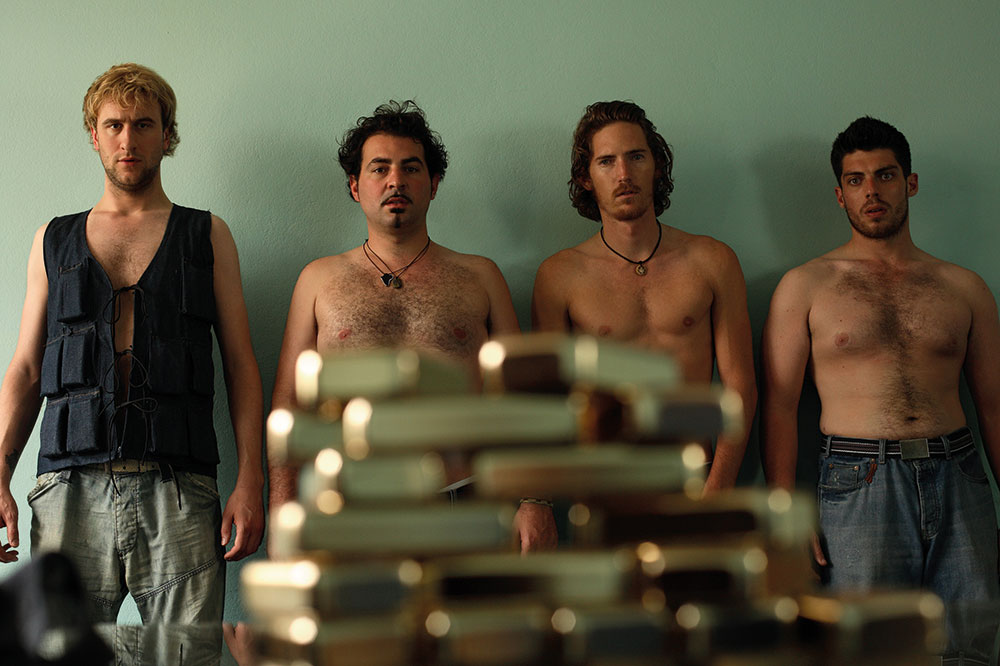 Another successful formula is Raw Television’s Banged Up Abroad (above), which airs on Channel 5 in the UK and National Geographic Channel around the world. Now up to 80 episodes, the show (also known as Locked Up Abroad) tells stories of travellers who found themselves behind bars, sometimes through their own stupidity (e.g. drug smuggling), and sometimes through no fault of their own (as victims of gang scams).
Another successful formula is Raw Television’s Banged Up Abroad (above), which airs on Channel 5 in the UK and National Geographic Channel around the world. Now up to 80 episodes, the show (also known as Locked Up Abroad) tells stories of travellers who found themselves behind bars, sometimes through their own stupidity (e.g. drug smuggling), and sometimes through no fault of their own (as victims of gang scams).
Episodes involve interviews with the real protagonists and reconstructions using actors. Generally, the reconstructions will show conditions within foreign prisons.
For the most part, prison documentaries travel well. Prison: First & Last 24 Hours, an STV and GroupM Entertainment coproduction, for example, has been licensed as a format to Australian broadcaster Nine Network and is being sold in its completed version by distributor Sky Vision. As for 60 Days In, it is being remade for the UK by indie producer Pulse Films.
The fact that most of the above prison-themed shows do well in international markets is no real surprise to A&E’s Frontain-Bryant, who says: “We’re dealing with questions of universal interest. People are interested in why someone has ended up in prison. They also wonder how they themselves would cope.”
Issue of access and safety fade away when you’re dealing with dramas about life behind bars. Shows that have taken this approach include Wentworth, Orange is the New Black, Fangar, Unite 9 and The Night Of. Even the latest season of The Affair includes several sequences inside.
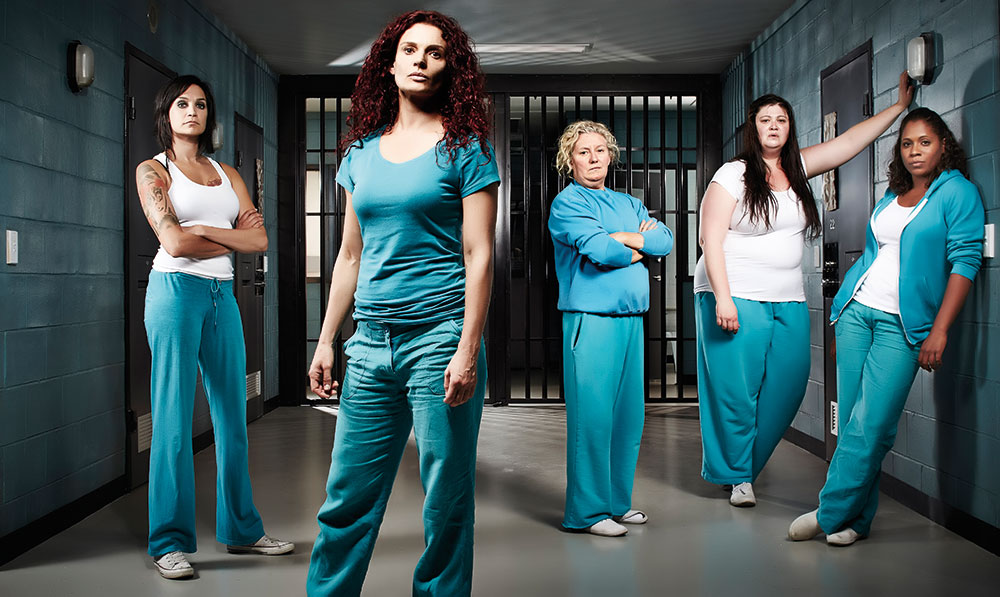 FremantleMedia Australia director of drama Jo Porter says Wentworth (above) has been a big success for the company at home and abroad. A reimagining of Prisoner Cell Block H, it is now up to five seasons on Foxtel channel SoHo and has been sold to 90 countries worldwide, including a recent deal that will see all five seasons play out on pay TV platform Sky in Germany. There are also successful German and Dutch remakes with a Belgian version on the way.
FremantleMedia Australia director of drama Jo Porter says Wentworth (above) has been a big success for the company at home and abroad. A reimagining of Prisoner Cell Block H, it is now up to five seasons on Foxtel channel SoHo and has been sold to 90 countries worldwide, including a recent deal that will see all five seasons play out on pay TV platform Sky in Germany. There are also successful German and Dutch remakes with a Belgian version on the way.
“I think the beauty of prison as a dramatic concept is that most people have never experienced it,” Porter says. “It’s a world with its own set of rules where what went on outside doesn’t have much relevance. It also creates interesting storylines because it forces people to interact with each other in way they wouldn’t usually.”
Another positive in the making of prison dramas is that you can refresh the character pool as prisoners come and go, but there are also major challenges. “The big one is authenticity,” Porter says. “You’ve got to go to the source – the prisoners, governors, warders – to make sure you’re portraying this world realistically.” This even relates to the props, because many day to day objects, such as phones and lighters, are customised for safe use in prison.
It’s notable that a lot of prison-themed shows focus on women. Aside from Wentworth and Orange is the New Black, there are shows like Fangar, Unite 9 and Bad Girls. The latter was a UK show that ran for eight seasons (107 episodes) from 1999 to 2006. According to Porter, “one reason for this is that you get such a wide range of female characters in female prison dramas – unlike mainstream drama. That doesn’t just appeal to the audience but also to female actors, who can play parts that aren’t usually on offer”.
Many of the above dramas look like they will be around for a while, especially Orange is the New Black, which has been given an additional three-season commission by Netflix. Plus, as the Wentworth stats show, prison dramas travel as well as their factual counterparts.
This point is reinforced by the global appeal of Orange is the New Black and by Spanish drama Vis a Vis (pictured, top), which aired on Channel 4’s streaming service Walter Presents as Locked Up after a strong showing on home soil.
Like so many women-in-prison dramas, there is a fish out of water feel about Vis a Vis, with the central character a timid accountant who ends up among murderers and drug addicts after being duped by her millionaire lover. Speaking to the Radio Times, Walter Presents curator Walter Iuzzlinno claimed the show’s style suits international audiences, saying: “Locked Up is very shiny and feels American – you could imagine it being made by HBO – but at the same time it’s got the darkness of a Scandi noir. And it really cracks the stereotype by having this action-movie quality and putting women at the centre of it.”
 The latest female-focused prison series about to hit the international market is Icelandic drama Fangar (above), which tells the story of an affluent woman who is sent to jail for a vicious assault that leaves her father in a coma. The show was created by Unnur Ösp Stefánsdóttir and Nina Dögg Filippusdóttir, both of whom also feature in the cast – as prisoners.
The latest female-focused prison series about to hit the international market is Icelandic drama Fangar (above), which tells the story of an affluent woman who is sent to jail for a vicious assault that leaves her father in a coma. The show was created by Unnur Ösp Stefánsdóttir and Nina Dögg Filippusdóttir, both of whom also feature in the cast – as prisoners.
Speaking to TBI, they say: “This is an idea we had nine years ago after watching a documentary on Iceland’s only women’s prison. We started visiting women in prison and gradually developed the idea while we were working on other, mainly theatre, projects.”
Core to the Global Screen-distributed drama is the idea that prisoners are often people who have just take a wrong turn – or have been subject to traumas like sexual abuse. “Our central character is arrogant when she goes in, but she learns from the other prisoners as the show goes on,” say the two creators. “Just as we found when we met real-life prisoners, she realises that the other prisoners are really not that different to her.”
Stefánsdóttir and Filippusdóttir identify another point of interest about female-themed prison shows, which is that they can be a metaphor for the way a lot of women feel inside jail and out: “The prisoners in our show aren’t just the women behind bars, they are the ones with secrets that can’t reveal or who are beaten down by their situations in day to day life.”

